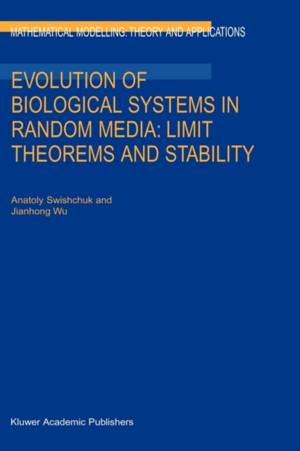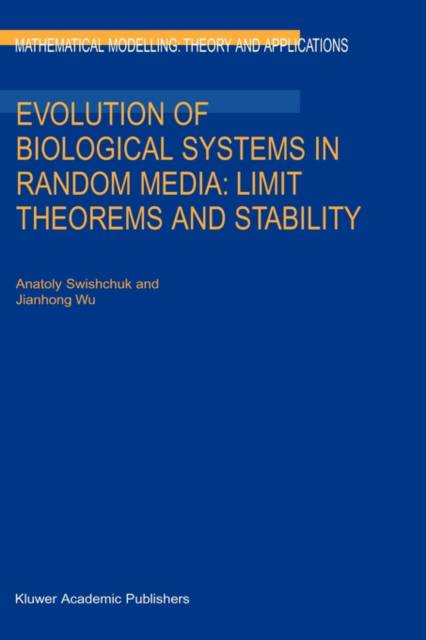
- Afhalen na 1 uur in een winkel met voorraad
- Gratis thuislevering in België vanaf € 30
- Ruim aanbod met 7 miljoen producten
- Afhalen na 1 uur in een winkel met voorraad
- Gratis thuislevering in België vanaf € 30
- Ruim aanbod met 7 miljoen producten
Zoeken
Evolution of Biological Systems in Random Media: Limit Theorems and Stability
Anatoly Swishchuk, Jianhong Wu
€ 125,95
+ 251 punten
Omschrijving
The book is devoted to the study of limit theorems and stability of evolving biologieal systems of "particles" in random environment. Here the term "particle" is used broadly to include moleculas in the infected individuals considered in epidemie models, species in logistie growth models, age classes of population in demographics models, to name a few. The evolution of these biological systems is usually described by difference or differential equations in a given space X of the following type and dxt/dt = g(Xt, y), here, the vector x describes the state of the considered system, 9 specifies how the system's states are evolved in time (discrete or continuous), and the parameter y describes the change ofthe environment. For example, in the discrete-time logistic growth model or the continuous-time logistic growth model dNt/dt = r(y)Nt(l-Nt/K(y)), N or Nt is the population of the species at time n or t, r(y) is the per capita n birth rate, and K(y) is the carrying capacity of the environment, we naturally have X = R, X == Nn(X == Nt), g(x, y) = r(y)x(l-xl K(y)), xE X. Note that n t for a predator-prey model and for some epidemie models, we will have that X = 2 3 R and X = R, respectively. In th case of logistic growth models, parameters r(y) and K(y) normaIly depend on some random variable y.
Specificaties
Betrokkenen
- Auteur(s):
- Uitgeverij:
Inhoud
- Aantal bladzijden:
- 218
- Taal:
- Engels
- Reeks:
- Reeksnummer:
- nr. 18
Eigenschappen
- Productcode (EAN):
- 9781402015540
- Verschijningsdatum:
- 31/10/2003
- Uitvoering:
- Hardcover
- Formaat:
- Genaaid
- Afmetingen:
- 165 mm x 248 mm
- Gewicht:
- 503 g

Alleen bij Standaard Boekhandel
+ 251 punten op je klantenkaart van Standaard Boekhandel
Beoordelingen
We publiceren alleen reviews die voldoen aan de voorwaarden voor reviews. Bekijk onze voorwaarden voor reviews.











